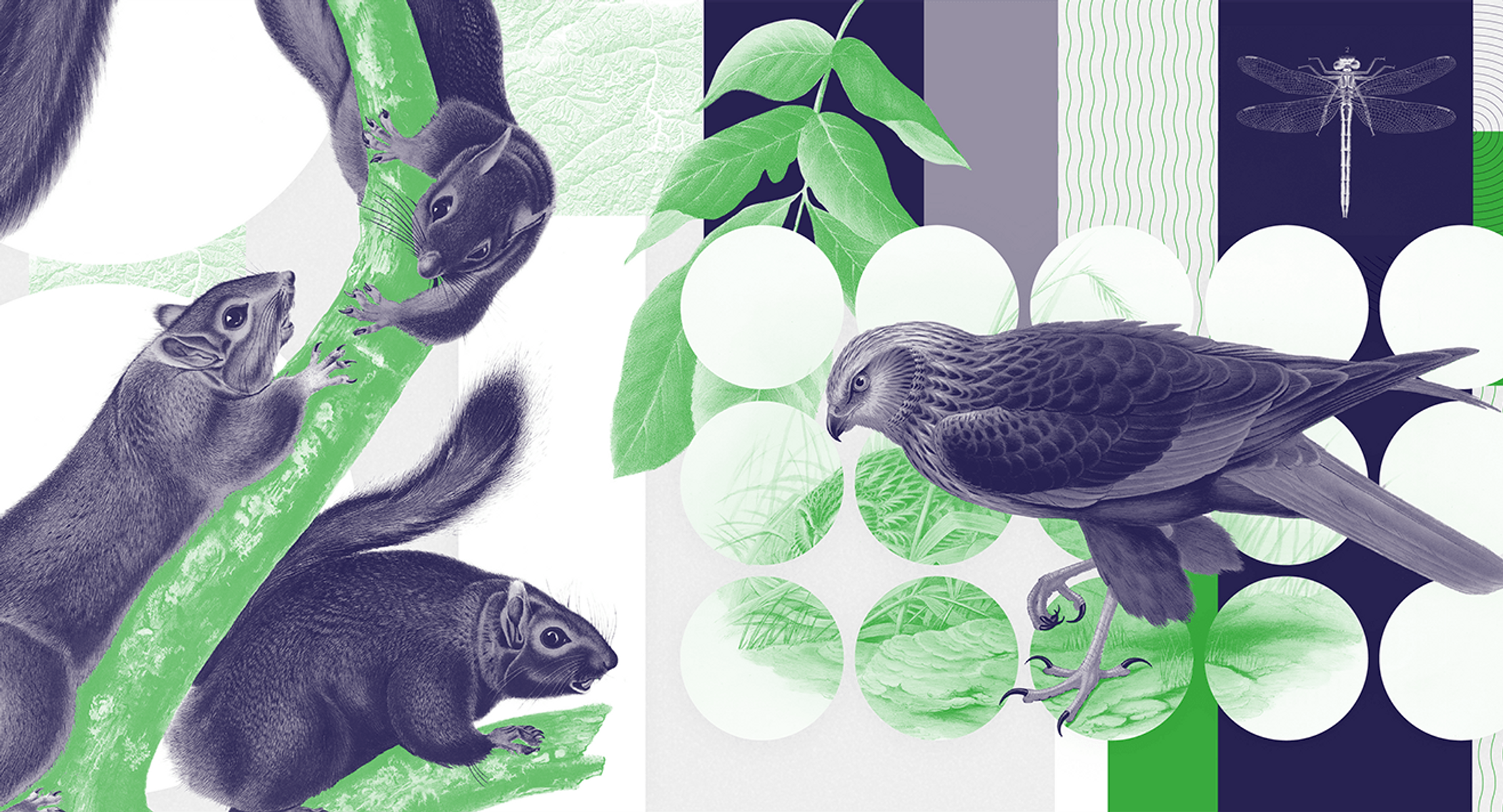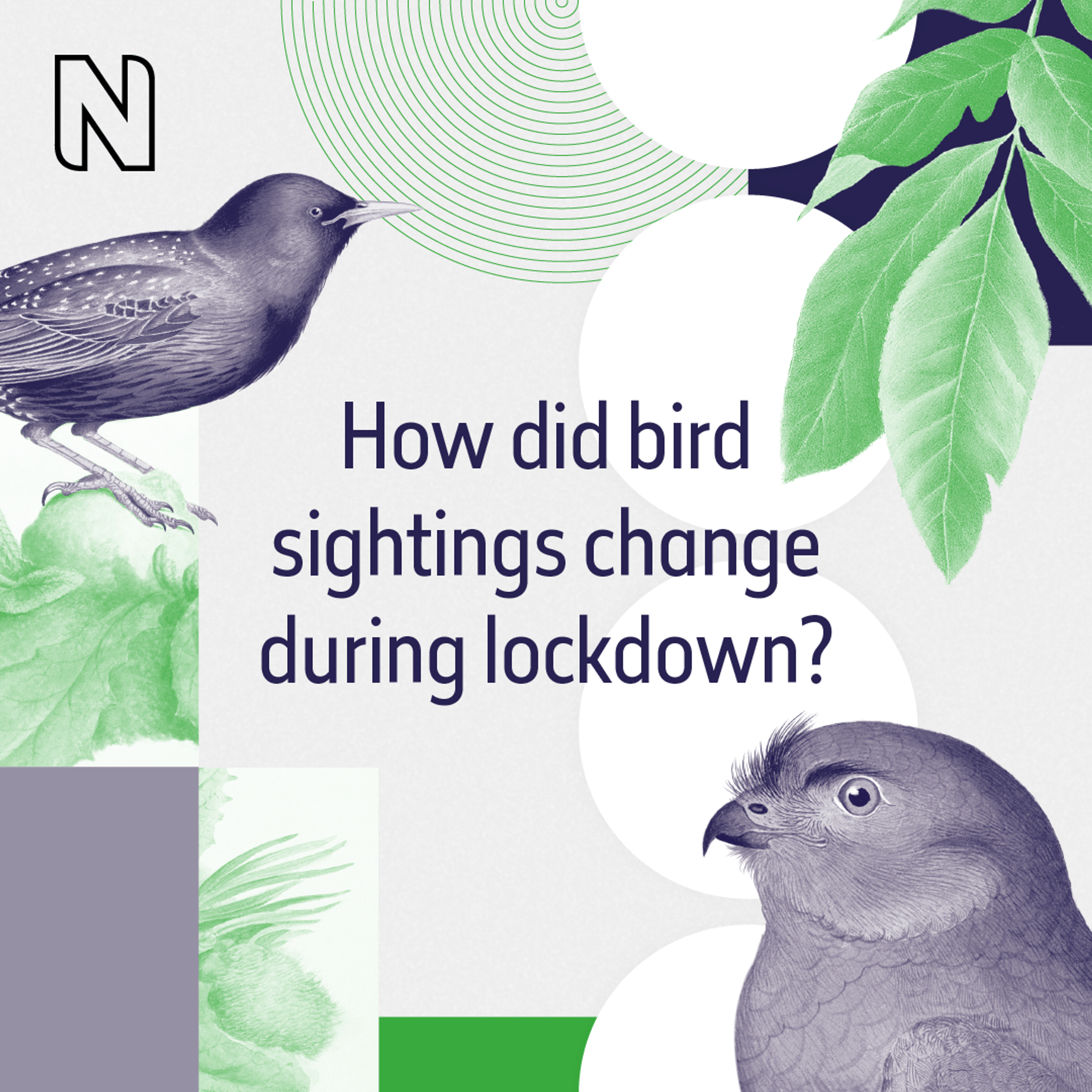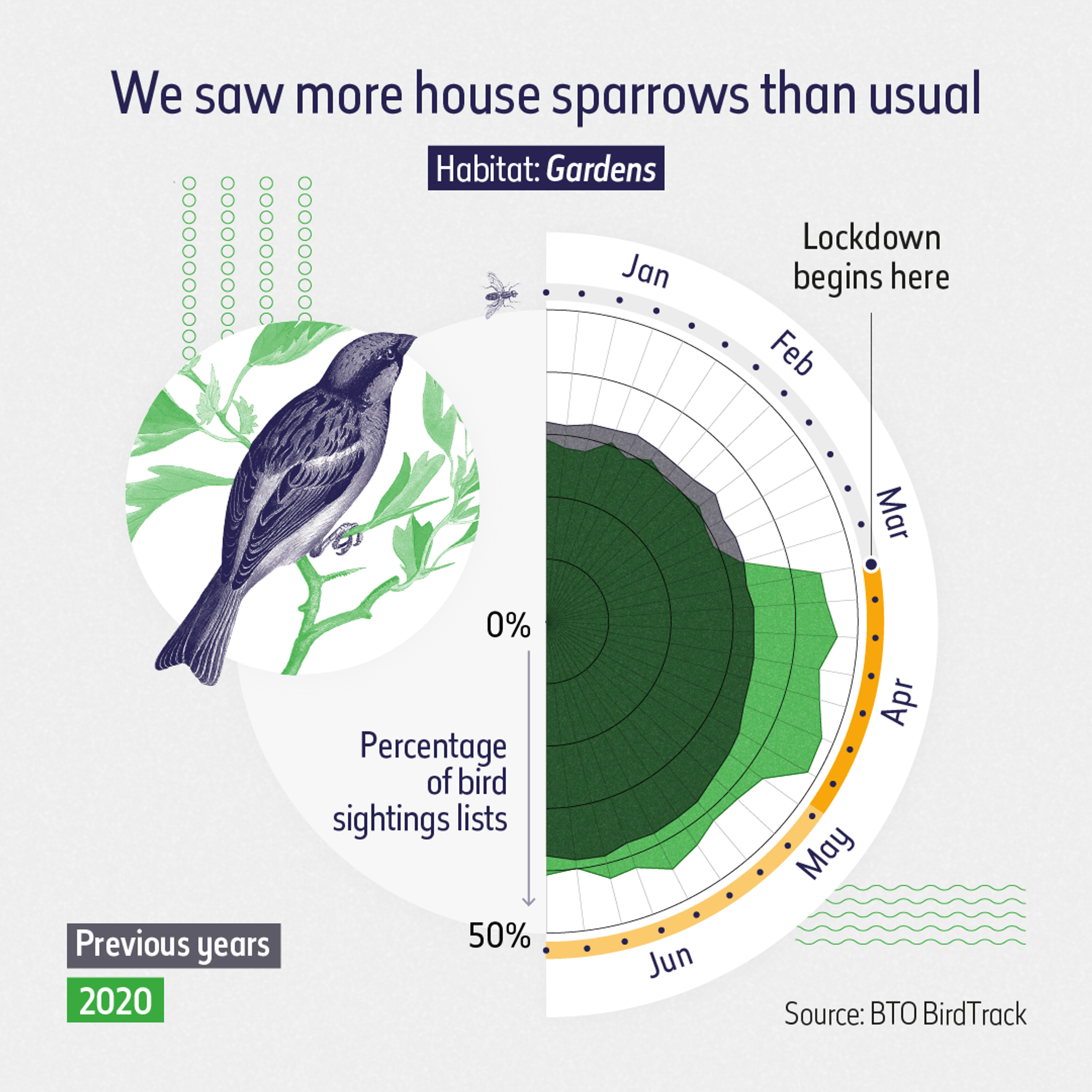Natural History Museum

In this science-saturated, illustrated article for the Natural History Museum, we explored the data behind nature’s response to lockdowns.
Funded by the Natural Environment Research Council, this piece had to inspire the public’s curiosity and crowdsource questions for researchers.
We learned as much as we could about air pollution, animal sightings, ground vibrations, bird habitats, mammal taxons and transport data and used a variety of chart types and annotations to represent them.
A heat map showing air quality evoked the idea of pollution, while illustrated bubbles communicated how many bees, bats and butterflies we saw in 2020 compared to 2019.
We know the days at home blurred into one, so we added a lockdown timeline to the time-series charts – a useful reminder of where we were on the lockdown scale and a visual link between different visualizations.
And to fit with the museum’s iconic aesthetic, we (literally) drew on their rich library of biological drawings.
The final piece flourished online and also sparked discussion at a live interactive virtual ‘Lates’ event about Nature in Lockdown.








Get in touch:hello@beyondwordsstudio.com
